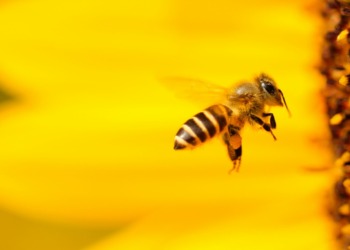Since 2007, the Scottish Sensory Centre (SSC) has been building a glossary of subject-specific signs in British Sign Language (BSL) – amassing around 7,000 signs so far. This initiative is known as the BSL Glossary Project.
The group plan to expand the BSL glossary to all areas of curriculum over time, but so far their work has focused on Science, Technology, Engineering and Maths (STEM) subjects.
A wide range of terminology specific to STEM topics has been compiled within their BSL sign language science glossary to date – everything from astronomy to maths to computer science – but just recently, a new and extremely timely category of scientific terms was added to the list: Environmental science.
Up until now, BSL users have had to fingerspell complex terminology in discussions on matters of climate change and the environment. However, this latest addition to the BSL glossary will help to break down this barrier and empower them with 200 new signs to have their voices heard.
Under the themes “ecosystems and biodiversity,” and “physical environment and pollution,” the environmental science section of the BSL glossary features categories such as “conservation,” “fishing and agriculture,” and “global climate change,” amongst many others.
The 200 signs were developed from GCSE and A Level curriculum by a team of BSL linguists, environmental scientists, and members of the Deaf community, brought together by the SSC and the Royal Society – a collaborative project which aimed to “rewild” BSL and “make science more accessible for the Deaf community.”
“We take a list of terms from the school curriculum and then work together to come up with something accurate but also visual of the meaning,” explained Dr Audrey Cameron, BSL Glossary Project Coordinator, Chancellor’s Fellow University of Edinburgh, and former Deaf chemistry teacher.
Each new sign is equipped with a video demonstration, video definition and written definition providing vital context. Some examples of the new signs include:
- El Niño
- Carbon footprint
- Tipping point
- Rewilding
- Biomimetics
- Intensive aquaculture
- Anthropogenic
- Smog
- Carbon sequestration
- Polar vortex winds
- Ozone depletion
- Satellite imagery
- Greenhouse gases
And @ProfBrianCox demonstrates how to do the new sign for 'herbivore'. Give it a go and send us your signs! #BSL #environment https://t.co/PPdX9heYo9 pic.twitter.com/PSszvvWoqg
— The Royal Society (@royalsociety) August 11, 2023
Enabling “Deaf Voices to be Heard as Part of the Debate”
The creation of these 200 new BSL signs aims to empower deaf people to join in on crucial conversations on matters such as climate change, biodiversity loss and the environment.
Dr Audrey Cameron stated:
“The development of the glossary will benefit, for example, those attending future global climate and biodiversity summits and enable deaf voices to be heard as part of the debate – it will also act as a resource for sign language interpreters.”
Developing this terminology can allow more BSL users to “engage with the topic” as well as “study and work in science,” the Royal Society explains.
“I was involved in research for 11 years and went to numerous meetings but was never was truly involved because I couldn’t understand what people were saying,” Dr Cameron told BBC News.
“I wanted to talk with people about chemistry and I just wasn’t able to,” she explained.
Related Articles: Indigenous Languages and Ecocide: The Legacy of Western Colonialism Re-examined | How Climate Change Is Killing Languages | Can Artificial Intelligence Help Us Speak to Animals?
The Royal Society’s Diversity and Inclusion Committee Chair, Prof Jeremy Sanders, said:
“We hope these new signs will inspire and empower the next generation of BSL-using students and allow practising scientists to share their vital work with the world.”
Later in 2023, the group will launch 200 more signs. According to the Guardian, these will cover themes around “energy,” “sustainability,” and “the impact of environmental change on humans,” featuring signs for “global warming,” “carbon neutral” and “deforestation.”
“These new BSL signs are an important first step towards allowing BSL users to not only join the conversation about the current threats to biodiversity and the environment,” stated the Royal Society, “but also share their appreciation of the natural world.”
Here, @ClaraMBarker is demonstrating the sign for 'physical environment'. Find out more about the sign and its definition in the glossary, and try it out yourself: #BSL https://t.co/POlOenOQN9 pic.twitter.com/QPNmV8DEWX
— The Royal Society (@royalsociety) August 11, 2023
Which Other Subjects Does the BSL Glossary Cover?
There are in fact nine other subjects covered in the BSL Glossary, each featuring a wide range of themes containing subject-specific signs developed by BSL linguists and collaborating expert specialists.
Here’s a snapshot of the subjects and some of the scientific signs created:
- The Astronomy section includes terms like “nebula,” “asteroid belt” and “dark matter.”
- The Biology section features signs such as “photosynthesis,” “stem cell” and “herbivore.”
- The Chemistry section covers terms like “atomic mass,” “test tube” and “covalent bond.”
- The Computing Science section includes “algorithm,” “IMG <img>” and “HTML.”
- The Cyber Security section has terms like “biometric data,” “facial recognition” and “spam emails.”
- The Data Science section has signs for “data mining,” “metadata” and “artificial intelligence (AI).”
- The Geography section features “plate tectonics,” “cumulonimbus clouds” and “permafrost.”
- The Mathematics section includes signs for “prime number,” “linear equation” and “factor of 10.”
- And the Physics section covers signs like “magnetic field,” “momentum” and “speed of light.”
The SSC also highlight that they are interested to know which subject-areas people would like to see featured next!
Editor’s Note: The opinions expressed here by the authors are their own, not those of Impakter.com — In the Featured Photo: Person doing sign language. Featured Photo Credit: Kevin Malik









